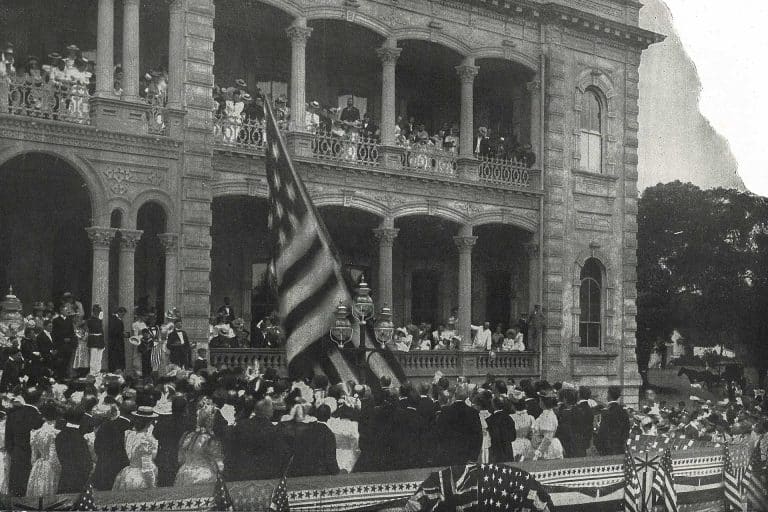Tasty Tributes: The Fascinating History Behind Foods Named After Famous Figures
The world of gastronomy is a vibrant tapestry woven with dishes that pay homage to notable individuals. These dishes, bearing the names of famous figures, not only tantalize the taste buds but also carry stories of admiration and tribute. They serve as cultural ambassadors, bridging the gap between history and the present and connecting us to a global culinary heritage. These edible accolades often arise from moments of culinary creativity sparked by the presence or influence of celebrities, politicians, and royalty.


The Legend of General Tso and His Iconic Chicken
General Tso, a prominent military leader from the Qing dynasty, is perhaps more famously known in the culinary world than in the annals of Chinese history. Born in 1812 in Hunan, China, General Zuo Zongtang (also transliterated as Tso Tsung-t’ang) was not only a skilled strategist but also a key figure in suppressing various uprisings and expanding the Qing territory. Despite his significant military achievements, he has an unusual and lasting legacy in the West through a dish he had no hand in creating: General Tso’s Chicken.
This iconic dish, which bears his name, was invented by Chef Peng Chang-kuei, a Chinese expatriate who fled to Taiwan after the Chinese Civil War. In the 1950s, Peng concocted a sweet and spicy chicken dish during a banquet, which he named after General Tso as a nod to his Hunanese roots and perhaps to honor the general’s legendary toughness and heroic status. The dish was adapted to suit American tastes when Peng opened a restaurant in New York City in the 1970s, where it became synonymous with Chinese cuisine in the United States, albeit diverging significantly from its original flavor profile.
The transformation of General Tso’s Chicken into a global phenomenon is a powerful example of how food can carry and preserve cultural significance. Dishes named after famous figures often transcend their origins to gain a life of their own. This iconic dish honors a historical figure and bridges cultural gaps, introducing a piece of Chinese history, however stylized, to diners worldwide. Its enduring legacy celebrated not for its historical accuracy but for its deliciously bold flavors, represents a story of cultural adaptation we can all appreciate and learn from.

Earl Grey: The Man Behind the Tea
With its distinctive bergamot oil flavor, Earl Grey tea is named after Charles Grey, the 2nd Earl Grey, who served as Prime Minister of the United Kingdom from 1830 to 1834. Known for passing the Reform Act of 1832 and the abolition of slavery within the British Empire through the Slavery Abolition Act of 1833, Earl Grey’s political legacy is significant. However, his name has become even more commonly associated with the famous tea blend that carries his title.
The story behind Earl Grey tea’s naming is steeped in myth and legend. One popular tale suggests that the tea was a gift from a Chinese mandarin to Earl Grey, thanking him for some act of kindness or diplomatic gesture. According to this narrative, the tea was specially blended with bergamot to suit the water at the Earl’s family home, which had a distinctive mineral flavor. Another version claims that a British tea merchant formulated the tea in the early 19th century to mimic the pre-existing Chinese recipe.
Despite the various stories, what remains clear is that Earl Grey tea became widely popular in Britain during his time and has since become a staple in tea cultures worldwide. Today, it remains a symbol of refinement and an enduring tribute to the Earl’s legacy, albeit in a cup rather than through political achievements. This tea, characterized by its unique flavor, continues to be enjoyed by millions. It serves as a historical reminder of the rich cultural exchanges between the West and the East during the colonial era, enriching our culinary diversity.


The Earl of Sandwich and the Origin of a Culinary Staple
John Montagu, the 4th Earl of Sandwich, is the eponymous inspiration behind one of the most ubiquitous food items in the world: the sandwich. A prominent 18th-century British statesman, Montagu served as the First Lord of the Admiralty and was a noted patron of the explorer James Cook.
However, he is best remembered not for his political or exploratory contributions but for his role in creating the sandwich. According to popular lore, the Earl requested something to eat during a particularly long gambling session without leaving the game table. His cook put sliced meat and cheese between two pieces of bread, a solution that allowed Montagu to continue playing while eating. This practical invention quickly caught on, allowing people to eat conveniently without utensils.
The sandwich’s popularity soared and became a standard not only in Britain but worldwide, evolving into countless varieties and styles. What likely began as a way to facilitate non-stop gambling became a cornerstone of quick and easy meal preparation. The Earl’s dietary innovation left a lasting impact on culinary customs globally, turning the sandwich into a versatile and beloved meal for people of all ages and walks of life.


Anna Pavlova: The Ballerina Behind the Dessert
Anna Pavlova was a renowned Russian ballerina, famous for her grace and the ethereal quality of her dancing, which captivated audiences in the early 20th century. Born in 1881, Pavlova became best known for her role in “The Dying Swan,” which showcased her delicate and passionate performance style that influenced the future of ballet. Her international tours brought classical ballet to a global audience, cementing her status as one of the most celebrated dancers of her time.
The dessert named after Anna Pavlova was created in her honor during one of her tours to Australia and New Zealand in the 1920s. Both countries have since engaged in a friendly dispute over its origin, each claiming the meringue-based dessert as their own. The dessert consists of a crisp crust and soft, light inside, topped with whipped cream and fresh fruit, designed to echo the lightness and delicacy for which Pavlova was known in her dance.
The creation of the Pavlova dessert reflects not only an homage to the ballerina’s stature and her impact on the cultural landscapes of Australia and New Zealand but also encapsulates the essence of her art in a form that appeals to the senses of taste and sight, much like her performances. Today, the Pavlova remains a popular dish in both countries, celebrated especially during festive seasons, and continues to be a sweet tribute to the legendary dancer’s enduring legacy.


Margherita of Savoy and the Pizza Named in Her Honor
Margherita of Savoy, the queen consort of Italy, played an influential role in the unification of Italy during the late 19th century. Born into the royal House of Savoy, she became the first Queen of unified Italy through her marriage to Umberto I. Margherita was widely admired for her beauty, grace, and commitment to social causes, embodying the new spirit of a unified Italy.
The origin of the Margherita pizza is closely tied to her name and is attributed to a visit she made to Naples in 1889. The story goes that during her stay, the Queen grew tired of the French gourmet meals that were customary at her table and requested a variety of pizzas from the local cuisine. Out of the varieties she tasted, the pizza featuring tomatoes, mozzarella cheese, and basil, which represented the colors of the Italian flag—red, white, and green—greatly pleased her. This particular pizza was then named “Pizza Margherita” in her honor.
The naming of the Margherita pizza after Queen Margherita reflects her impact on Italian culture and symbolizes Italy’s unity and identity through its national colors. This dish has transcended its royal beginnings to become a staple in global cuisine, representing simplicity and quality—hallmarks of Italian cooking. Today, the Margherita pizza continues to be celebrated as a delicious tribute to the beloved Queen.


Dame Nellie Melba: The Voice That Inspired Culinary Creations
Dame Nellie Melba, born Helen Porter Mitchell in Australia in 1861, was an internationally acclaimed soprano who became one of the most famous opera singers of the late Victorian Era. Her stage name, “Melba,” derived from her hometown of Melbourne, reflected her deep roots and pride in her Australian heritage. Renowned for her voice’s pure tone and formidable technique, Melba achieved significant success in Europe, especially at London’s prestigious Royal Opera House and La Scala in Milan.
The creation of Peach Melba, a dessert featuring vanilla ice cream, poached peaches, and raspberry sauce, was a tribute crafted by the celebrated French chef Auguste Escoffier. In the early 1890s, during Melba’s triumph at Covent Garden, Escoffier was so inspired by her performance that he created the dish to reflect her sweetness and remarkable talent. The dessert’s delicate composition and elegant presentation were meant to mirror Melba’s style and grace on the stage.
Melba toast, another food item named after the opera singer, came into being under less glamorous circumstances. During an illness, her doctor prescribed Melba a dry, crisp toast diet. Escoffier again took the opportunity to honor the singer by thinly slicing and lightly toasting the bread, which then also bore her name. Both Peach Melba and Melba toast highlight Escoffier’s culinary genius and his admiration for Dame Nellie Melba, whose legacy extended from the opera house into the realm of fine dining, continuing to enchant people audibly and gustatorily.
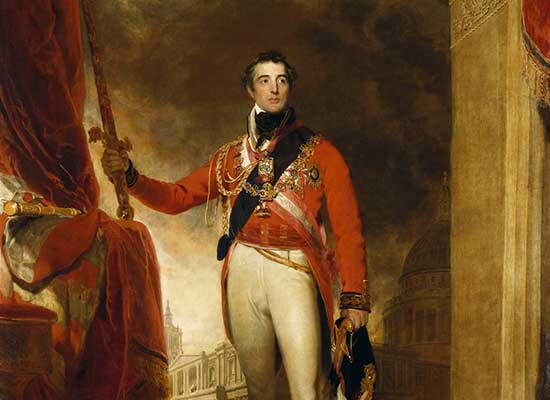
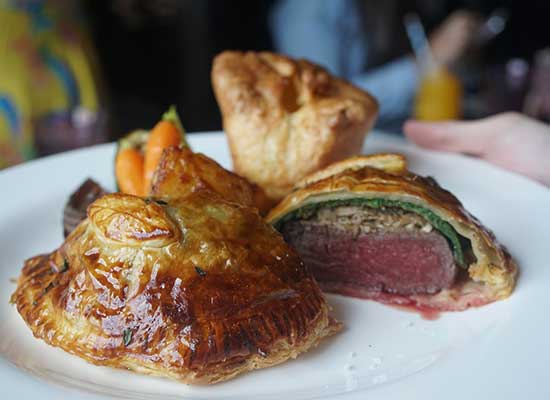
Duke of Wellington: The Hero Behind Beef Wellington
Arthur Wellesley, the 1st Duke of Wellington, was a prominent British military figure and statesman renowned for his decisive victory over Napoleon at the Battle of Waterloo in 1815. His military prowess earned him a dukedom and a lasting place in British history as one of its greatest military commanders. Wellington also served as the Prime Minister of the United Kingdom across two terms, further cementing his legacy in British political history.
Beef Wellington, a luxurious dish consisting of beef tenderloin coated with pâté and duxelles, then wrapped in puff pastry and baked, is believed to be named after the Duke. While the exact origins of the dish and its naming are somewhat murky, it is commonly thought that the dish was created to celebrate the Duke’s heroic victory after Waterloo. Its resemblance to a military boot, which might be considered characteristic of Wellington’s iconic, stalwart image, is sometimes noted as part of the inspiration.
The association of this grand dish with the Duke of Wellington also reflects the luxury and robust nature of his era, celebrating his victories and contributions to British society. Beef Wellington remains a dish often reserved for significant occasions, echoing the grandeur and impact of the Duke’s life and accomplishments. This culinary homage continues to grace dining tables during celebrations as a delectable reminder of Wellington’s enduring influence.


Suzette and the Creation of Crêpes Suzette
Suzette, though not as historically prominent as monarchs or military leaders, played a memorable role in the culinary world due to an intriguing incident at a dinner attended by the future King Edward VII of the United Kingdom. As a young guest at this prestigious gathering in the late 19th century, Suzette became the namesake for one of the most elegant desserts of the era, Crêpes Suzette. This dish, consisting of crêpes with a Suzette sauce (a delectable concoction of caramelized sugar, butter, orange juice, zest, and Grand Marnier), was created under serendipitous circumstances that led to its worldwide fame.
The famous story recounts that the dessert was accidentally flambéed by a young waiter named Henri Charpentier, who served at Café de Paris in Monte Carlo when he tried to prepare a dessert for the Prince and his guests. Instead of ruining the dish, the flames enhanced the flavor with a delightful caramelization and a touch of chic theatricality that immensely pleased the royal party. Charpentier later named the creation after Suzette, recognizing her as a muse of sorts and capturing the essence of that memorable evening in the flavors of the now-famous dish.
Another story suggests that the pancakes were named in honor of Princess Suzette de Carignan, who requested that the chef Jean Reboux prepare them for King Louis XV of France, with whom she was infatuated at the time. In another version, devoid of any royal ties, it is said that a German chef named Joseph created the dish for a French actress named Suzanne ‘Suzette’ Reichenburg, who played a maid serving crêpes in a theatrical production.
Crêpes Suzette remains a staple in French cuisine, celebrated not just for its taste but also for its flair in preparation. The dish’s backstory adds a layer of romanticism and nostalgia, evoking the elegance of turn-of-the-century French society and its royal connections. Suzette’s name, forever linked to this culinary creation, highlights how moments of unexpected innovation can lead to enduring traditions in gastronomy.

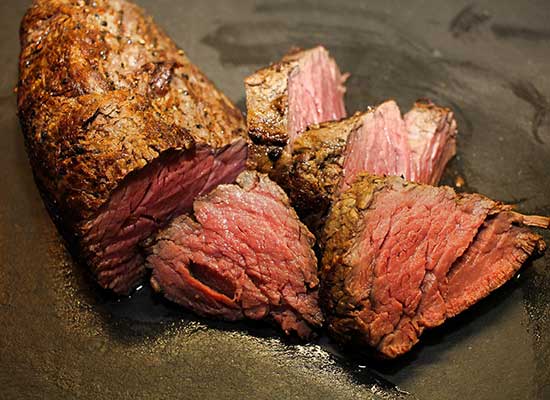
François-René de Chateaubriand: The Statesman Behind the Steak
François-René de Chateaubriand was a celebrated French writer and diplomat of the early 19th century. He was known for his influence on French literature and his role in politics during the turbulent years following the French Revolution. Chateaubriand’s literary works, including his autobiography “Mémoires d’outre-tombe,” are considered pivotal in the Romantic movement in France. His career also encompassed significant diplomatic roles, including serving as the French ambassador to the United Kingdom.
The dish that bears his name, Chateaubriand steak, is a testament to his status within French society and his reputed love for fine dining. While the specifics of the dish’s origin are debated, it is widely believed that his chef created the recipe to satisfy Chateaubriand’s preference for tender and flavorful cuts of meat. The Chateaubriand steak is typically a thick cut from the tenderloin, cooked using a method that enhances its natural flavors and tenderness.
This culinary creation reflects Chateaubriand’s taste and his legacy in French culture. As a dish frequently associated with refined and romantic dinners, it represents the elegance and depth of the Romantic era that Chateaubriand helped shape. Today, the Chateaubriand steak remains a symbol of gastronomic luxury. It is often served in fine dining establishments as a centerpiece that celebrates the grandeur of French cuisine and the historical figure it is named after.
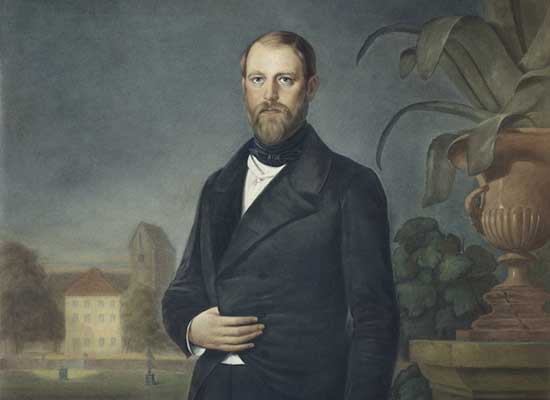

Otto von Bismarck and the Naming of Bismarck Herring
Otto von Bismarck, a towering figure in 19th-century European politics, served as the Chancellor of the newly unified German Empire. Known as the “Iron Chancellor,” Bismarck was instrumental in the unification of Germany through his shrewd diplomacy and series of wars against Austria and France. His legacy includes significant political achievements and a profound impact on German national identity and international law.
Bismarck herring, a marinated herring dish, was named in honor of the Chancellor due to his well-known penchant for this particular type of pickled fish. Herring was a staple in the German diet, especially in the northern regions, and the story goes that a fishmonger decided to name his particular marinated herring after Bismarck in the hopes of attracting the Chancellor’s favor or perhaps to reflect the robust and enduring nature of the dish, much like Bismarck’s own political style.
This culinary tribute became popular across Germany and beyond, symbolizing not only Bismarck’s influence but also the broader cultural tastes of the era. Today, Bismarck herring continues to be a beloved traditional food, enjoyed for its bold, sharp flavors, and it serves as a reminder of Bismarck’s lasting impact on German culture and European history.
Culinary Legacies: The Enduring Influence of Namesake Dishes
Naming dishes after famous figures has woven a rich tapestry of history and culture into the culinary world. Each dish serves as a tribute and a narrative, encapsulating stories of creativity, admiration, or even a moment of uncertainty. These foods carry the essence of the individuals they are named for, offering us a taste of history in every bite. As these dishes continue to be prepared and savored, they keep the memory of their namesakes alive, ensuring that their stories endure in kitchens and dining rooms around the globe.
This intersection of food and biography enriches our dining experiences, adding meaning to our meals. Whether it’s a piece of music that moves a chef to name a dessert or a political figure whose favorite dish becomes a menu staple, these culinary tributes celebrate the lasting impact of notable personalities uniquely deliciously. As we partake in these meals, we do more than eat; we commemorate, celebrate, and remember, keeping history alive through the flavors of its most illustrious figures.








